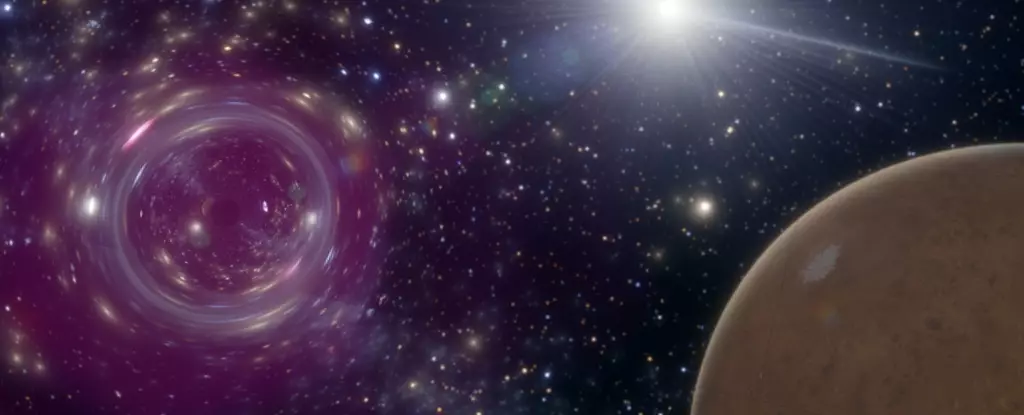The universe is a vast, enigmatic arena where ancient celestial bodies and forces continually shape the cosmos. Among the most intriguing hypothesized entities are primordial black holes (PBHs), which may provide vital clues about the universe’s composition, particularly concerning dark matter. A new study has reignited interest in these elusive objects by suggesting they might traverse our Solar System once every decade, offering us unique observational opportunities.
Primordial black holes are theorized to have arisen in the universe’s infancy, mere moments after the Big Bang. These objects were born from dense clumps of ionized matter that collapsed under their own gravitational pull. Unlike their larger counterparts, which form from dying stars, PBHs are thought to be relics of the universe’s earliest epochs. As cosmic evolution continued over 13.8 billion years, these enigmatic black holes may have drifted throughout space, their existence inferred through their gravitational effects rather than direct observation.
The allure of PBHs lies in their potential to explain the nature of dark matter, the unseen mass that comprises most of the universe but eludes conventional detection methods. The study of how frequently these primordial black holes pass through our Solar System opens the door to understanding not only the dynamics of our celestial neighborhood but also potentially unveiling the nature of dark matter itself.
Researchers in the United States recently conducted a study calculating the frequency at which these primordial black holes might enter the inner Solar System. They concluded that a PBH, comparable in mass to an asteroid but infinitesimally small in size, could be expected to pass near Mars approximately every ten years. While the exact mechanisms by which these encounters could be observed remain complex, the findings suggest detectable effects—particularly a subtle wobble in Mars’ orbit.
Such a wobble, imperceptibly minor at around one meter over a decade, can be measured with incredible precision. Current technologies enable astronomers to determine Mars’ distance from Earth within about ten centimeters. This level of accuracy facilitates the detection of disturbances caused by a passing primordial black hole.
The study’s lead author, Tung Tran from MIT, approached this cosmic phenomenon with a captivating thought experiment: what would happen if a primordial black hole whisked past a person? Although such an encounter is practically inconceivable, the hypothetical implications reminded researchers of the potential influence of black holes on planetary bodies. By simulating the effects of a flyby on Mercury, Venus, and Mars, the team observed that Mars exhibited the most pronounced disturbances due to its robust monitoring infrastructure.
However, this prompts critical questions: if a PBH can induce such effects, can other celestial bodies like asteroids produce similar gravitational influences? While the answer is tentatively affirmative, the scenarios differ significantly. Asteroids typically maintain orbit within the established solar disk, interacting with planets over extended timeframes, often lacking the abrupt influence a high-velocity PBH would exert.
Despite the promising nature of the findings, researchers caution that additional simulations incorporating various celestial influences are required for a comprehensive understanding of the interactions involved. David Kaiser, another physicist from MIT, highlighted the importance of distinguishing between the gravitational backgrounds generated by ordinary asteroids and the unique signatures of primordial black holes. By investing further in these simulations, researchers hope to refine their predictions and hone in on the dynamics that could ultimately lead to the observation of these ancient black holes.
The potential detection of a Martian wobble induced by a primordial black hole could carry implications extending far beyond mere curiosity. It would signal a significant breakthrough in astronomers’ attempts to decipher dark matter’s elusive existence—bridging the gap between fundamental historical cosmological events and modern-day astrophysics.
As our understanding deepens, we stand on the threshold of potentially monumental revelations about the universe. The search for primordial black holes and their gravitational whispers may unlock the riddles of dark matter, one of the most profound mysteries facing modern science. In the grand tapestry of cosmic endeavors, each finding brings us closer to comprehending the universe’s intricate design and our place within it. With every decade that passes, we may inch closer to witnessing the shadowy passage of these ancient black holes, guiding us toward enlightenment amidst the vast darkness of space.


Leave a Reply